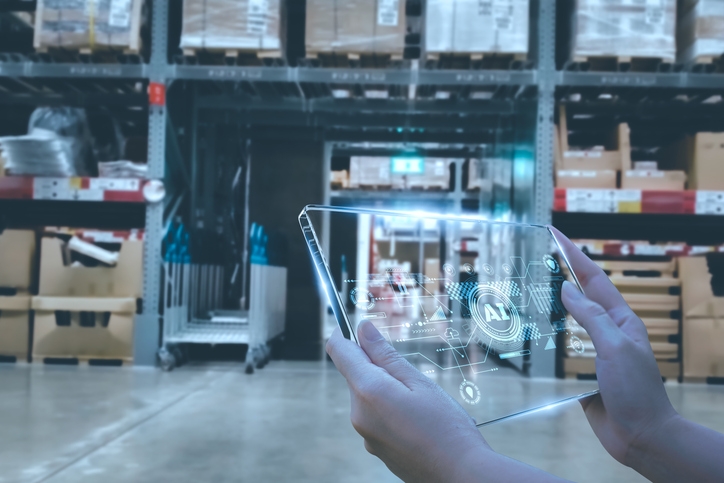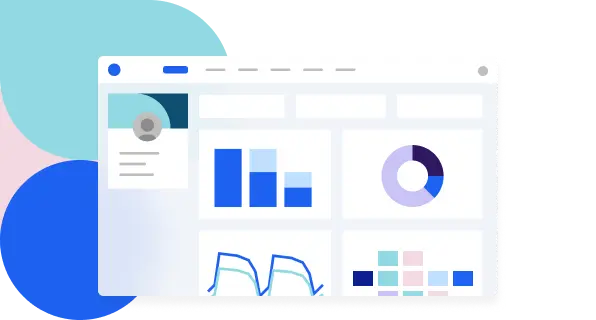International Event Logistics: 10 Things You Can't Miss About Customs, Freight & Local Laws
Discover key strategies for overcoming cross border shipping challenges and enhancing efficiency. Read on to streamline your international logistics.

Introduction: Why Logistics Make or Break International Events
International events—from tech expos to auto shows—are incredibly rewarding but logistically complex. One misstep in customs clearance, freight timing, or local legal compliance can delay shipments, block booths, or even cancel key product reveals. If you’re shipping equipment, staging materials, promotional items, or tech assets across borders, understanding freight logistics, local laws, and customs protocols is non-negotiable.
This guide is built for event planners managing international exhibitions, roadshows, and product launches, giving you tactical insights on navigating customs, avoiding hidden legal risks, and streamlining freight—so your event reaches the global stage on time and on budget.
10 Logistics Steps Every Global Event Organizer Must Follow to Clear Customs and Stay on Track
1. Know Exactly What Needs Customs Clearance for International Events
When transporting event assets across borders, not everything can be thrown into a crate and shipped. International customs require specific declarations for each item, and anything undeclared or miscategorized can result in delays, fines, or even seizures.
What typically requires customs clearance:
- Audio-Visual Equipment: LED walls, speakers, microphones, projectors, streaming kits
- Staging and Rigging Materials: Truss systems, lighting setups, platforms, drapes
- Exhibition Booths and Structures: Modular booths, kiosks, brand towers, flooring
- Printed Materials: Catalogs, flyers, signage, roll-ups—even if intended as free handouts
- Giveaways and Samples: Branded merchandise, tech gadgets, food/beverage samples (these may trigger import duties, especially if consumable)
- Product Demos or Prototypes: Tech gadgets, electronics, machinery, or beta units for preview
Important: Even temporary-use goods must be declared, especially if they’re high-value or resemble retail products.
Commonly Missed Items That Still Require Clearance:
- Power adapters, extension cords, backup batteries
- Branded clothing worn by staff (uniforms with logos)
- Marketing screens or tablets used for registration
Key Tip:
Start building a detailed shipping manifest 8–12 weeks before your shipping date. Include:
- A clear description of every item (e.g., "Samsung LED video wall – 1.5m x 2.5m")
- Quantity
- Individual and total value
- Country of origin
This manifest is your foundational document for customs, freight booking, and insurance. It should be digitally shareable and updated in real time.
Also prepare photos of expensive equipment for backup documentation—some customs agents may request proof that an item is for display/demo and not resale.
2. How to Speed Up International Shipping and Clear Customs Faster
For events involving temporary imports, the ATA Carnet is a game-changer. It’s like a passport for your event equipment—allowing duty-free, tax-free movement of goods across 100+ participating countries, provided the items are returned home after the event.
What Is an ATA Carnet?
An ATA Carnet (Admission Temporaire/Temporary Admission) is a standardized document issued by the Chamber of Commerce in your country. It allows you to:
- Avoid paying import duties, customs bonds, or VAT in each destination country
- Make customs clearance faster at both entry and exit
- Reuse the same document across multiple countries for a tour or roadshow (valid for up to 12 months)
When to Use an ATA Carnet
- You’re shipping items temporarily for a trade show, exhibition, demo, or cultural event
- The items will not be sold or consumed in the destination country
- You need to move the same equipment to multiple cities or countries in one year (e.g., a global tech roadshow)
Great use cases:
- AV setups for product launches
- Interactive displays or machinery for demo
- Fashion samples for global shows
- Staged brand booths reused across cities
What You Need to Prepare for a Carnet
- A complete list of items, with:
- Descriptions
- Serial/model numbers
- Quantity and individual value
- Total shipment value
- Destination country or countries
- Intended return date
Every item listed must be returned to avoid penalties. Lost or gifted goods may trigger duties retroactively.
Lesser-Known Facts and Tips:
- One Carnet = Multiple Countries: If your event tour spans several locations, the same document can be reused across borders.
- Carnets Can Be Amended: You can add countries or items later, but it requires revalidation and extra time.
- Non-Carnet Countries: Some major economies like Brazil or the UAE may not accept Carnets. In these cases, you’ll need temporary import bonds or special customs brokers.
Cost of an ATA Carnet
- Fee ranges between $250–$500 depending on value and number of items
- May require a security deposit or insurance (usually 30–40% of the item value)
- Avoids much higher costs of duties and delays
Pro Organizer Tip:
Use a freight forwarder with Carnet experience. Many logistics partners can even manage your Carnet applications and track item compliance at every step, ensuring no item gets stuck or forgotten during re-export.
3. Permits, Laws, and Border Security: Stay Compliant in Every Host Country
Cross-border shipping isn’t just about clearing customs—it’s also about complying with local laws and regulations once your goods arrive. Different countries, and even specific cities or provinces, may enforce strict guidelines on temporary event operations, often tied to time zones, border security, or public safety.
Key Permits and Documentation You May Need:
- Temporary Event Permits – Required for setting up any temporary structure (like a booth or stage) in most global cities.
- Noise Permits and Signage Approvals – Especially important in high-density urban areas or near residential zones (think New York, Paris, or Singapore).
- Insurance Certificates – Many venues and municipalities require proof of public liability or vendor insurance from international organizers.
- Fire Safety and Electrical Compliance – All booth materials and demo equipment often need certification to meet fire retardant and electrical safety standards.
- Health and Safety Declarations – Required particularly if your event includes food samples, demonstrations involving machinery, or large crowds.
Country-Specific Examples to Watch Out For:
- Germany: Event setups involving electronic components must carry TÜV certification—especially for LED walls and demo products. Even temporary structures may be reviewed by local authorities before the event begins.
- Singapore: If you’re flying in technical or setup staff, you’ll need to secure local labor licensing through the Ministry of Manpower. Failure to do so can result in on-site work stoppages or fines.
- Canada and Mexico: Cross-border shipping into these countries (especially from the U.S.) involves unique customs documentation, and may fall under regional trade agreements like USMCA. Make sure your commercial invoices reflect proper HS codes and item values.
- United States (Central Time & beyond): Large cities like Chicago or Dallas may require city-specific vendor registration, depending on local laws and time zone boundaries that affect service hours and permit submissions.
Don’t Forget About Time Zones and Daylight Saving Time (DST)
When managing global logistics and compliance, you’re operating across multiple time zones and shifting regulations. For example:
- Daylight saving time can impact customs authorities’ operating hours
- Local time differences may affect permit office closures
- Standard time vs. DST varies across states and countries (e.g., Arizona vs. New York vs. Mexico)
Use global scheduling tools and local DMC partners to track the current local time in each city you’re planning for—especially when dealing with documentation deadlines, customs procedures, and event operations.
Best Practices to Stay Compliant:
- Start gathering extensive documentation at least 10–12 weeks before the event
- Include fire safety test reports, TÜV certifications, and insurance papers in your customs folder
- Use a compliance checklist tailored to each destination
- Engage local consultants or DMCs for real-time, region-specific guidance
4. Finding the Right Freight Partner: Protect Your Booth Materials and Meet Tight Timelines
Not all shipping partners are built for the demands of global event freight. Event logistics involve tight delivery windows, international regulations, multiple transport modes (air, rail, sea), and complex customs procedures. Choosing the wrong logistics provider can create bottlenecks across your supply chain.
What to Look for in an Event Freight Forwarding Company:
- Specialization in Event Logistics: They should understand live event timelines, ATA Carnet management, and venue-level delivery requirements.
- On-Site Scheduling Capabilities: Top-tier providers offer “to-booth” delivery, meaning your packages go directly from port or airport to the designated exhibit space—not a warehouse.
- Global Trade and Customs Knowledge: The right partner knows how to handle customs declarations, commercial invoices, tariffs, and trade agreements across different countries.
- Time Zone-Aware Operations: Providers must be experienced in managing handovers across different time zones, standard time vs. daylight saving time, and border security wait times.
The Importance of Choosing a Time-Sensitive Freight Expert
Events don’t wait. Your setup window may be just a few hours—especially for international exhibitions. For more insights, read about leveraging technology in trade show planning to enhance logistics and event success. Look for logistics partners who:
- Track local customs authorities' schedules
- Help clear customs even across remote or less-developed ports
- Offer round-the-clock communication across global operations teams
Bonus Considerations for Cross-Border Shipping:
- Modular Packaging: Helps avoid damages in rail or sea transportation and allows repacking for return shipments
- Freight Consolidation: Helps lower customs duties and streamline extensive customs documentation for events with large item lists
- ATA Carnet + Commercial Invoice Management: Many providers will prepare and submit all required Carnet, invoice, and customs documentation on your behalf
- Experience with North America (U.S., Canada, Mexico): A must if your event circuit includes these countries, where trade rules differ sharply
Common Pitfalls to Avoid:
- Using a domestic-only shipping company for international freight
- Assuming “overnight” shipping applies globally—observe daylight saving time and local customs processing delays
- Not asking whether your partner provides customs brokerage services or just transport
Pro Tip: Ask potential providers if they have experience in handling event freight for trade shows in your target destination, especially in high-regulation countries like Germany, Canada, or Singapore.
5. Insurance for Event Freight: Don’t Let Delays or Damage Derail Your Event
Even with flawless planning, international event logistics is a world filled with uncertainties. From missed flights and port congestion to unpredictable weather or handling errors, your materials face risk at every stage of the supply chain. These aren’t just transportation issues—they’re potential event-breaking incidents that can lead to lost revenue, frustrated customers, and missed business opportunities.
Specialized cargo insurance should cover:
- Theft or loss in transit due to border security breaches or misrouted packages
- Physical damage to staging, AV equipment, or booth structures during sea, air, or rail transport
- Delays that cause missed event participation, especially in shows where setup windows are fixed
Pro Tip: Don’t stop at cargo insurance. For large-scale tech expos, auto shows, or global summits, secure:
- General liability insurance (for accidents or damages during the event)
- Event cancellation insurance, which protects your transactions and investment if the show is called off due to unforeseen circumstances
This multi-layered insurance approach protects against future challenges and reflects smart, technology-driven risk management concepts used by experienced event planners around the world.
6. Get Your Documentation Right: Avoid Border Delays with Complete Commercial Invoices
Documentation errors are the #1 reason event freight gets stuck at customs. Missing a line item or providing the wrong value can turn a seamless operation into a logistical nightmare. Customs authorities across different countries require extensive documentation that aligns with global trade standards.
At minimum, prepare:
- Pro forma invoice with detailed item descriptions and values
- Packing list matching every crate or pallet
Certificate of origin, if the destination country requires proof of manufacture
- ATA Carnet or temporary import documentation to avoid customs duties on non-sold items
- Power of attorney authorizing your freight forwarder to act on your behalf
Action Tip: Create a "Customs Binder" with both physical and cloud-based access. Include all customs declarations, commercial invoices, permits, and backup documentation. Grant access to all key operations staff and on-site team members.
By approaching documentation with this level of focus and detail, you reduce friction at the border, speed up customs clearance, and ensure your materials arrive on time—despite time zone boundaries, different customs procedures, or complex import regulations.
7. Don’t Get Surprised by Local Taxes and Duties: Budget for Import Costs Upfront
Even with an ATA Carnet, not every item you ship is exempt from taxes. Many countries impose customs duties or value-added tax (VAT) on:
- Consumables like food samples, bottled beverages, or branded giveaways
- Printed marketing materials and signage
- Goods left behind post-event or sold onsite
These costs can catch organizers off guard—especially when navigating events across multiple countries with varying tax structures, trade agreements, and economic policies.
To avoid surprises:
- Discuss import/export tax scenarios with your freight forwarder and customs broker
- Add a buffer for unforeseen tariffs or local compliance costs in your event logistics budget
- Review if bilateral trade agreements (like NAFTA or EU partnerships) can help lower costs in countries like Canada or Mexico
Pro Tip: Make sure your logistics team stays aligned on current local time, holiday schedules, and daylight saving time changes that could affect warehouse hours, customs operations, or delivery coordination across different time zones.
Factoring in these multiple variables upfront supports effective cross-border operations and minimizes last-minute budget blowouts—making your international event logistics process smoother and more cost-effective for both your team and your customers.
8. Build a Customs-Aware Timeline: Shipping Early Helps You Clear Customs on Time
When it comes to customs clearance, time is not on your side—especially for international events. Clearance durations can vary widely, typically ranging from 2 to 10 business days, depending on multiple factors such as the destination country’s bureaucracy, port congestion, accuracy of documentation, and whether your items are flagged for inspection.
To avoid last-minute surprises, expand your freight timeline:
- Ship at least 10–14 days before the event date—more if it’s your first time shipping to the destination country.
- Include a local holding buffer of 1–2 days in case customs officials request inspections or additional documentation.
- Avoid shipping during national holidays or peak vacation periods. For example, Chinese New Year or European summer holidays can significantly delay customs processes due to reduced staff or closure of offices.
- Be aware of time zone differences and local time regulations when coordinating handovers or clearances—especially if your logistics operations are running across multiple regions.
Pro Tip: Use project management tools or create a dedicated logistics timeline page that includes all key dates—shipment departure, arrival, clearance, delivery—to help all stakeholders stay aligned.
9. Partner Locally to Navigate Border Rules, Language Barriers, and Logistics Gaps
No matter how airtight your planning is, on-ground execution in international markets depends on your local partners. Multiple factors—language barriers, city regulations, or venue-specific rules—can easily disrupt logistics if you're operating blindly.
Here’s how to mitigate those risks:
- Partner with local DMCs (Destination Management Companies) or event agencies who understand city-level nuances—from freight access windows to municipal signage rules.
- Work closely with venue coordinators who can provide intel on freight entrances, delivery timing, and dock restrictions.
- Hire customs brokers who specialize in event logistics within the target country. They’ll help you navigate paperwork, expedite processing, and ensure you clear customs without penalties.
- In countries with legal or language complexities, bring in interpreters or local legal consultants to review your contracts, service agreements, or insurance documents.
Centralized control, local execution is key. If you're managing a multi-city or global tour, expand your toolkit with event logistics platforms like Azavista. They allow you to centralize documents, freight schedules, and vendor contacts on one collaborative page, helping ensure consistent quality and compliance—even across borders.
10. Your Global Event Freight Checklist: Everything You Need to Ship, Insure, and Deliver
Final Thoughts: Avoid Delays, Deliver Results
When it comes to international events, customs and freight issues can derail months of hard work. But with the right documentation, partners, and knowledge of local laws, you can confidently move exhibits, AV, and branded experiences across borders. Think of it not just as shipping equipment—but as protecting your event ROI and brand reputation.
CTA: Plan Global Events Smarter with Azavista: Streamline Your Event Supply Chain Today
From customs coordination to multi-city freight timelines, Azavista’s event logistics module helps event organizers:
- Centralize all freight, customs, and compliance workflows
- Collaborate with local teams across cities
- Avoid last-minute delays with smart alerts and reminders
More Event Management












